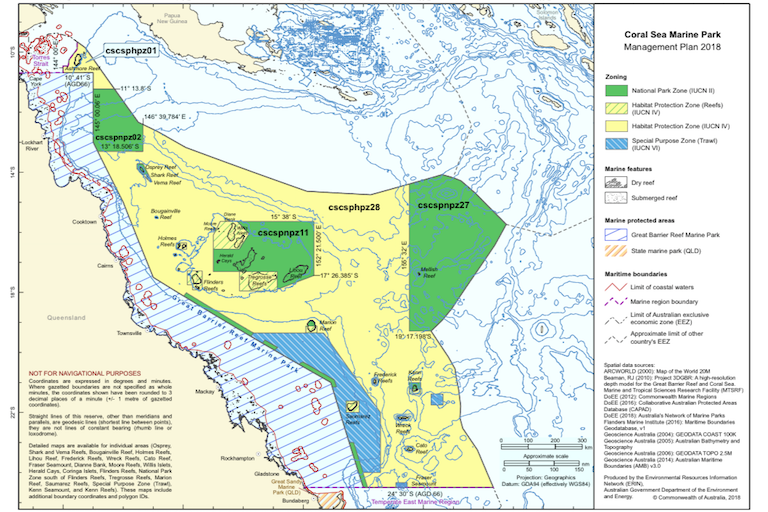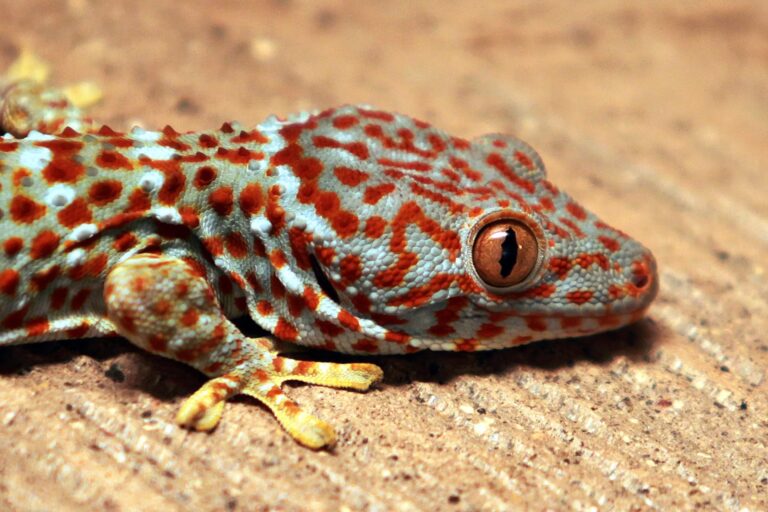- Australia is known for protecting its sea life in a 3.3 million square kilometer (1.3 million square mile) system of marine parks that cover 36 percent of the country’s oceans.
- The protection of those parks is now at stake, as the government last week approved five long-awaited management plans covering 44 parks. The new plans open an area almost the size of Japan to commercial and recreational fishing compared to the original plans formed by the previous government when the parks were proclaimed in 2012.
- A coalition of opposition parties attempted to block the new plans in parliament on Tuesday but failed.
- Conservation groups and hundreds of marine scientists have voiced vehement opposition to the government’s new plans.
Australia is known for protecting its sea life in a 3.3 million square kilometer (1.3 million square mile) system of marine parks that covers 36 percent of the country’s oceans. The protection of those parks is now at stake, as the government last week approved five long-awaited management plans covering 44 parks. The new plans open 17 percent of the parks’ area to commercial fishing and 16 percent of their area to recreational fishing compared to the original plans formed by the previous government when the parks were proclaimed in 2012.
On March 27, the left-leaning opposition Australian Labor Party and the Australian Greens party moved to block the ruling conservative Liberal Party of Australia’s plans in the Senate but failed.
Australia’s environment minister Josh Frydenberg said in a March 27 press release that the senate victory would be warmly welcomed by the fishing industry.
“Recognising the significant role the fishing industry plays in creating local jobs, these plans strike the right balance in protecting our oceans while providing certainty to this billion dollar industry,” he stated. The government has allocated 56 million Australian dollars, about $43 million, to implement the plans, according to the statement.

In an earlier press release announcing the new plans on March 20, Frydenberg described them as an improvement over the original plans. “The new regime improves on plans introduced but never implemented by Labor in 2012 by delivering a more balanced and scientific evidence-based approach to ocean protection, enabling tourism and well-managed fishing activity supporting local communities, local jobs and regional economies,” he stated.
The new plans are slated to take effect July 1. The area opened to fishing is about the size of Japan, at more than 350,000 square kilometers (135,000 square miles). The massive Coral Sea Marine Park, which borders the 2,000-kilometer (1,243-mile) long Great Barrier Reef Marine Park, will bear the brunt of the changes, Tony Burke, the former environment minister who helped set up the parks, told ABC Radio National on March 21. Burke now serves as the shadow environment minister. (In Australia, the opposition party sets up a “shadow” or alternative cabinet to the one actually in power.)
In 2012, the extensive system of marine protected areas was proclaimed under a Labor prime minister. Shortly after Burke passed management plans for the protected areas through the senate, but before they could take force, the Liberal government that took power in 2013 nullified them and put them under review for four years. Had Burke’s plans gone ahead they would have given 50 percent of the Coral Sea Marine Park full national park protection, whereas the new plans provide complete protection to only 25 percent, Burke said.
“No government anywhere in the world on land or sea has ever removed this much area from conservation,” Burke said in a press release on March 27. “There will be many losers as a result of this decision. At a time when ocean health is at critical levels the opportunity to establish resilience in large protected areas is seriously damaged by this decision.”


Conservation groups vehemently oppose the government’s new plans. The Australian Marine Conservation Society called the new plans “butchery,” writing on its website that “The scale of these cutbacks is unprecedented globally.”
Conservationists are also concerned that the new plans do not offer protection from oil drilling in two large areas, the North-west Marine Parks Network and the South-west Marine Parks Network.
An analysis [pdf] produced in 2016 by the independent scientific body the Ocean Science Council of Australia, says that under the new plans (then in draft form) fishing and mining activities will be able to continue as though the country’s renowned marine park system had never been established. It adds that the plans represent “the deliberate design of a system for poor conservation performance.”
One of the authors of the analysis, Jessica Meeuwig, a marine scientist from the Centre for Marine Futures at the University of Western Australia, told Mongabay the government’s plans were indefensible in allowing midwater trawling and longline fishing in key areas of the marine parks. “[Environment Minister Frydenberg] has done a real solid favor for commercial fishermen,” she said.
Contrary to the government’s claims, she said, the new plans ignore the scientific advice it received, with over 1,280 marine scientists signing a statement circulated by the Ocean Science Council of Australia to express concern about “the abandoning of science-based policy by the Australian government.”
Meeuwig said science shows that partial protection of marine environments, as the government is offering, is the same as no protection.
“It is worth less than nothing. I would rather have nothing than this,” she said of the new plans. “The only thing that matters in the zoning is the complete protection. Full protected areas are the engine room for ocean resilience.”
She said a big concern now is whether the states will follow the federal lead with the marine parks that come under state jurisdiction.

FEEDBACK: Use this form to send a message to the editor of this post. If you want to post a public comment, you can do that at the bottom of the page.













